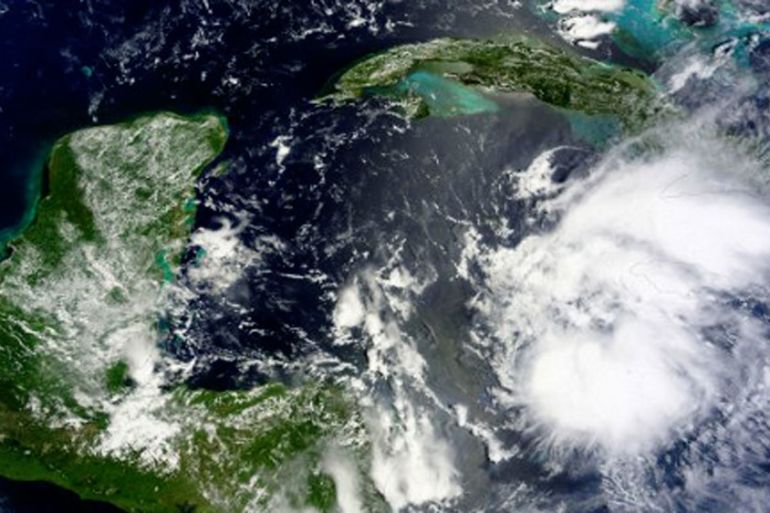Hurricane season kicks off in the Atlantic
Tropical Storm Earl rumbles across the Caribbean, causing heavy flooding across much of Jamaica.

Heavy rains associated with Tropical Storm Earl have caused severe flooding in sections of Jamaica’s resort city of Montego Bay.
As much as 66mm of rain was fell in just one day, according to a recording at the airport on the country’s northwest coast, a figure equal to the montly average for all of August.
Keep reading
list of 4 items‘Nothing left’: How climate change pushes Indigenous people from their land
Are seed-sowing drones the answer to global deforestation?
Rainfall set to help crews battling wildfire near Canada’s Fort McMurray
Earl struck on Tuesday after having already left six people dead and 12 injured as it passed to the south of the Dominican Republic. Metropolitan Transportation Authority spokesman Diego Pesqueira said that the storm brought power lines down onto a bus, sparking a deadly fire in the process.
In Jamaica, public events were cancelled and store owners extended their opening hours to allow people to stock up on emergency supplies, according to the Jamaica Gleaner daily newspaper.
The government also activated the National Emergency Center, and residents in coastal and low-lying areas were instructed to move to higher ground.
Tropical Storm Earl first showed signs of developing into a tropical system on July 28 as it made its way towards the Mid-Atlantic, having drifted across West Africa. It then raced across the eastern Caribbean before it was finally named a Tropical Storm on Tuesday, some five days later.
Earl is currently located around 115km to the northeast of Honduras. It is packing winds of 100km/h, with gusts closer to 120km/h.
The storm is expected to strengthen throughout the day on Wednesday, and may reach hurricane strength by the evening. It is expected to carry sustained winds of 120km/h ahead of making landfall late Wednesday night along the coast of Honduras, before heading on to Belize and the Yucatan Peninsula.
Rainfall accumulations of 200 to 300mm are expected. The higher ground of Mexico and Belize could receive amounts approaching 400mm, which could result in life-threatening flash floods and mudslides.
As is usually the case, coastal flooding is also likely, as a storm surge is expected to raise water levels by almost two metres above normal tide heights.